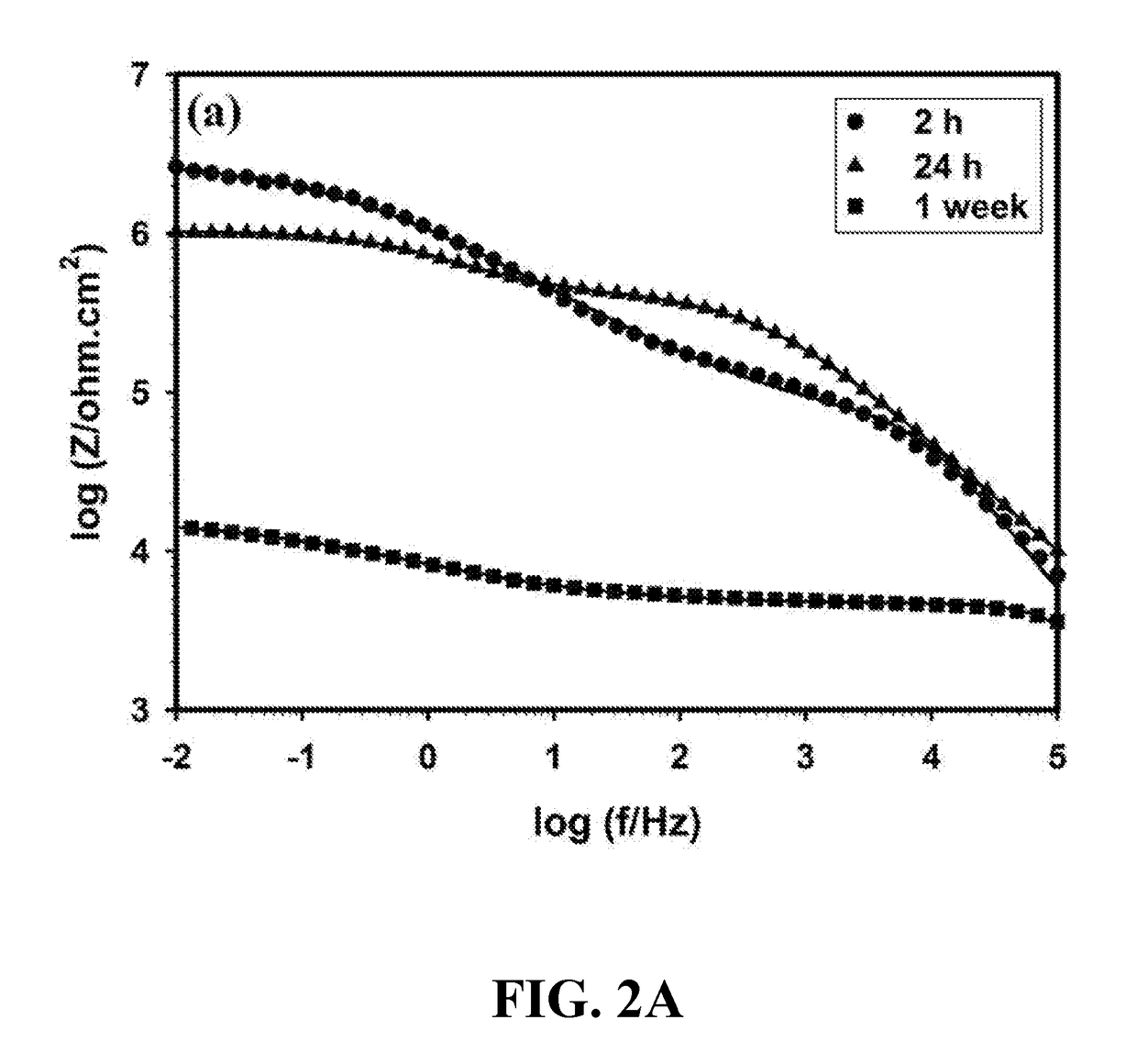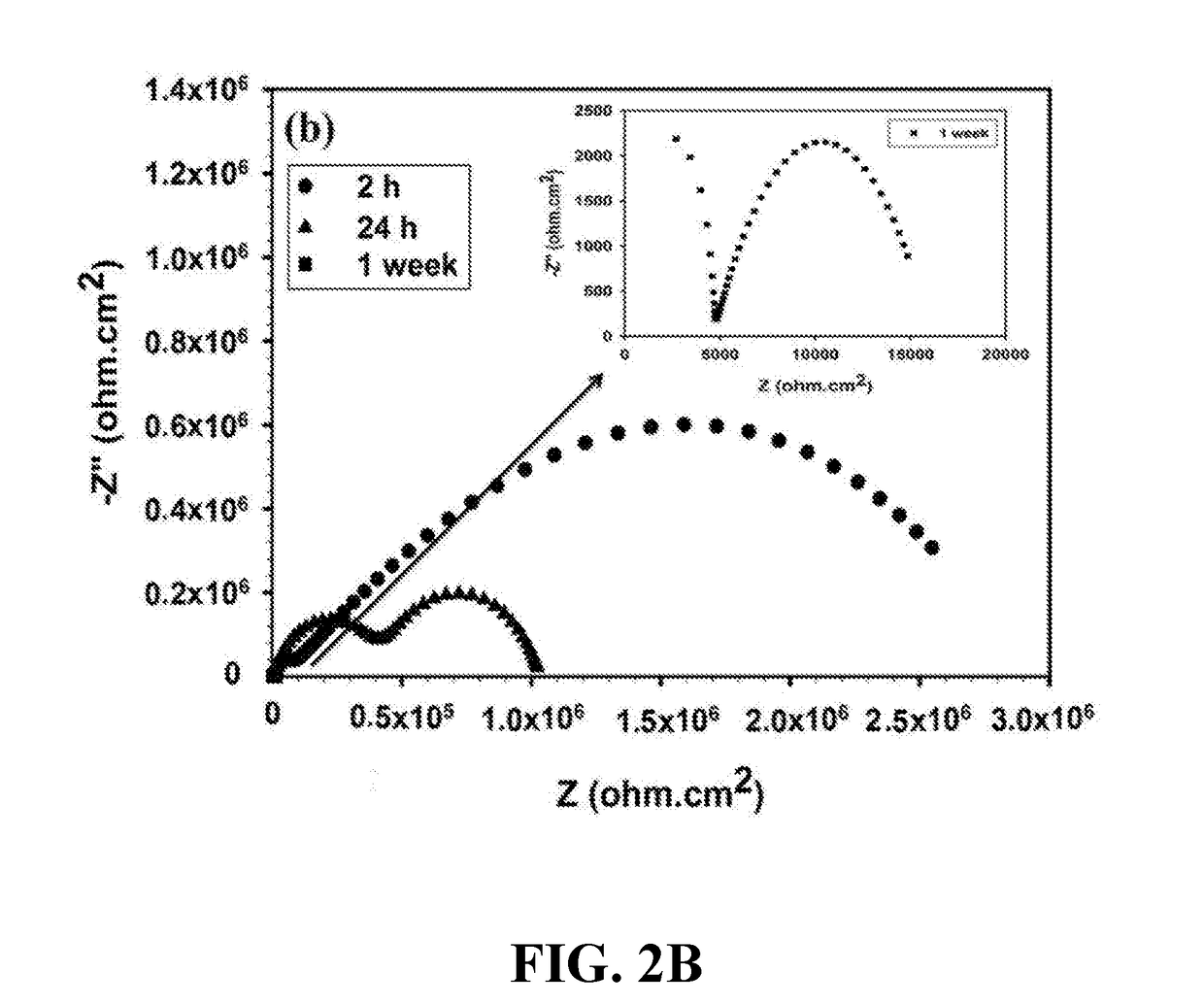Anti-corrosion nanocomposite coating
- Summary
- Abstract
- Description
- Claims
- Application Information
AI Technical Summary
Benefits of technology
Problems solved by technology
Method used
Image
Examples
example 1
on of an Exemplar Solvent-Based Epoxy Coating
[0040]In Example 1, a corrosion resistant platform including a mild carbon steel substrate coated with pure solvent-based epoxy coatings was fabricated as a reference sample. This reference sample was further used for comparing the coatings fabricated according to the teachings of the present disclosure with an exemplar pure solvent-based epoxy coating. Fabrication of a pure solvent-based epoxy coating included a first step of mechanical mixing a bisphenol epoxy resin (Epon 1001, EEW=480-550) and a polyamide curing agent (Versamid 115, Amine value=230-246 mg KOH / gram resin) with a stoichiometric ratio. A second step included diluting the solution of the previous step using thinner, and a third step included spray coating a pre-treated mild carbon steel substrate, with the solution prepared in the second step to obtain a coated substrate. A fourth step included heat-treating the coated substrate at a temperature of approximately 90° C. for...
example 2
of Fabricating Carbon Dots Using a Top-Down Approach and Using the as-Prepared Carbon Dots as a Filler in Solvent-Based Epoxy Coatings
[0041]In Example 2, carbon dots were fabricated using a top-down approach, pursuant to the teachings of the present disclosure. In different implementations, the fabricated carbon dots may be further used as nanofillers in solvent-based epoxy coatings. In this method, carbon black was used as a precursor for carbon dot synthesis via a high yield method with an efficiency of approximately 80%. In this Example, the method of fabricating carbon dots included a first step of dispersing approximately 8 grams of carbon black in approximately 1500 milliliters of a HNO3 solution, and a second step of refluxing the solution of the first step for approximately 24 hours at a temperature of approximately 135° C.A third step included evaporating the HNO3 at a temperature of approximately 180° C. in an N2 atmosphere, thereby obtaining light black sediments. In addi...
example 3
of Fabricating Carbon Dots Using a Bottom-Up Approach and Using the as-Prepared Carbon Dots as a Filler in Solvent-Based Epoxy Coatings
[0044]In Example 3, carbon dots were fabricated using a top-down approach, pursuant to the teachings of the present disclosure. The fabricated carbon dots were further used as nanofillers in solvent-based epoxy coatings. A hydrothermal method is one of the more common and high yield methods for production of carbon dots, utilizing citric acid and urea as precursors. The hydrothermal method is a facile and low-cost method for synthesis of carbon dots, with negligible energy consumption, in which the final product is synthesized in one step with high selectivity.
[0045]For synthesis of carbon dots, approximately 5.04 grams of citric acid and approximately 4.32 grams of urea (a citric acid:urea ratio of about 5:4.3) were dissolved in approximately 180 milliliters of deionized water, to obtain a first solution. The first solution was then magnetically sti...
PUM
| Property | Measurement | Unit |
|---|---|---|
| Concentration | aaaaa | aaaaa |
| Corrosion properties | aaaaa | aaaaa |
| Corrosion resistance | aaaaa | aaaaa |
Abstract
Description
Claims
Application Information
 Login to View More
Login to View More - R&D
- Intellectual Property
- Life Sciences
- Materials
- Tech Scout
- Unparalleled Data Quality
- Higher Quality Content
- 60% Fewer Hallucinations
Browse by: Latest US Patents, China's latest patents, Technical Efficacy Thesaurus, Application Domain, Technology Topic, Popular Technical Reports.
© 2025 PatSnap. All rights reserved.Legal|Privacy policy|Modern Slavery Act Transparency Statement|Sitemap|About US| Contact US: help@patsnap.com



